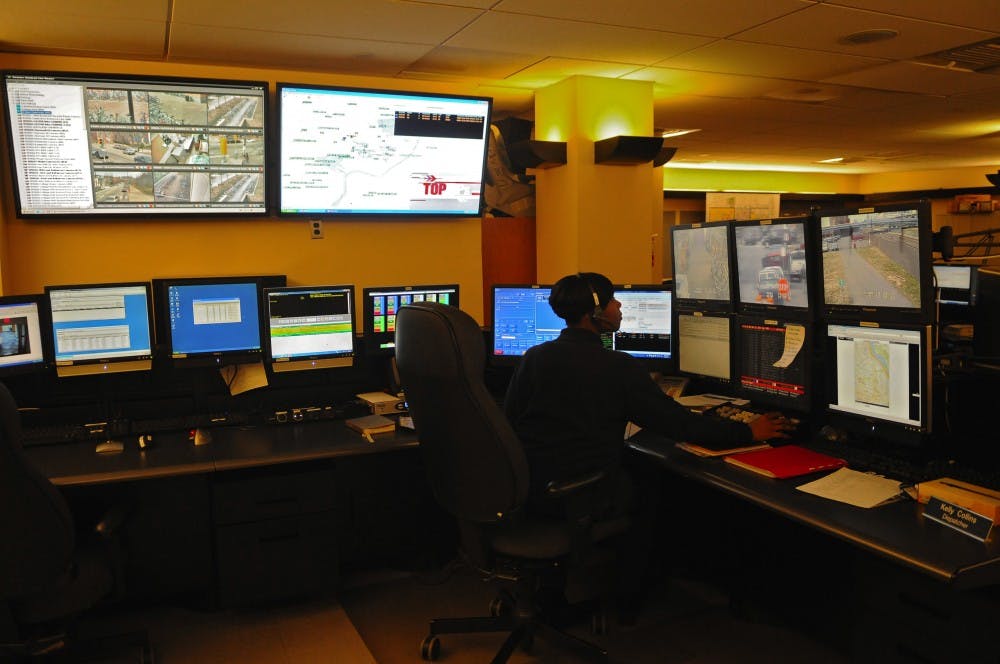The Philadelphia Police Department has joined Penn’s Division of Public Safety in creating a 24-hour emergency surveillance center.
Now one of about 10 cities in the nation with a real-time crime center, Philadelphia installed a surveillance center in the lobby of their police headquarters at 8th and Race streets.
The real-time center can pull camera images from crime scenes immediately, see every incoming 911 call and have access to SEPTA’s surveillance system.
“We’re doing it differently than any other real-time crime center,” said PPD’s Commanding Officer, Captain Joseph McDowell. “Ours will have real-time analysis, an operation center, daily watch and the confliction function, which is to prevent other police departments from stepping on each other during investigations.”
The project has been in the planning stages since 2008, when Police Commissioner Charles Ramsey first came to Philadelphia, according to McDowell.
In addition, automated license-plate readers were implemented in January, and the improved system has helped recover 50 stolen cars in a month’s time by scanning plates going as fast as 140 miles per hour.
The police department has also created SafeCam, which allows businesses and homeowners to register their private cameras so PPD can access the cameras if there is an emergency.
The new technology may also help Penn’s Department of Public Safety in patrolling crime.
Dispatchers from the PennComm Operations Center — DPS’s real-time emergency communications center — are able to see Philadelphia’s 911 calls, PPD’s Computer Aided Dispatching and radio systems. PennComm can also respond to Philadelphia Police calls in the Penn Patrol Zone.
Vice President for Public Safety Maureen Rush said DPS works in tandem with PPD.
“We’re additional eyes for the police department,” PennComm’s Director of Technology and Emergency Communications Mitchell Yanak added.
PennComm, which came online in DPS’s current headquarters in 1997, has close-circuit TV (CCTV) videos that dispatchers can pull up to view after an incident. Out of the 788 cameras that report to DPS, detectives can view recorded videos from 300 cameras while dispatchers from PennComm can view the other 488 cameras.
PennComm receives over 100,000 calls a year from the Penn community, Yanak said. The center usually has five people working eight-hour shifts at any given time.
According to Yanak, dispatchers are trained to observe only suspicious behavior and receive extensive training on the legal issues of CCTV cameras as well as privacy concerns.
Once suspicious behavior is sighted, PennComm dispatchers will call both Penn Police and Allied Barton to further investigate the case.
It currently takes the PPD about half an hour to conduct database searches for criminal records. With the new center, they hope to cut that down to 30 seconds.
Furthermore, if there are cameras at the scene of a crime, the images can immediately be brought up for the operators at the real-time center.
Still working on technological improvements, the real-time center is scheduled to be in full operation in October.
“We’re leveraging technology as a force multiplier so we can truly do more with less,” McDowell said. “Closing these gaps will help us speed up investigations.”
However, while the technology at the surveillance center is new, it isn’t flawless.
“Like any electronics, sometimes things go bad,” McDowell said. “The only problem is finding the funding to put more cameras up and funding to maintain them.” He added the police department is always looking for grant funding.
DPS is also looking to improve their real-time crime management systems. They want to integrate technology that allows images from cameras to stream directly into police cars so drivers can see what the dispatchers are also seeing.
They hope to install proximity card readers at the DPS building, which would read cards without swiping.



